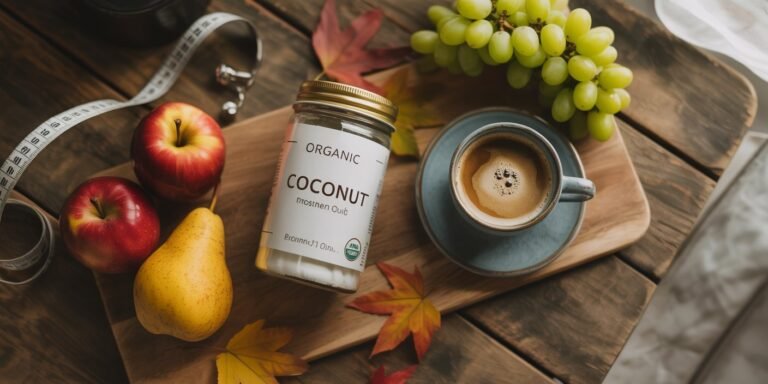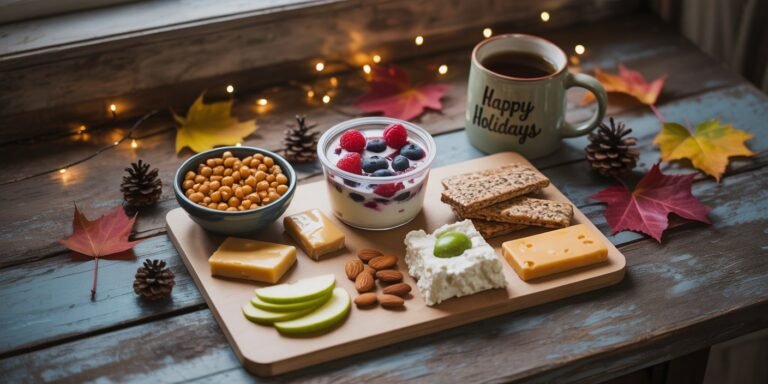Following a plant-based or vegan diet doesn’t mean you have to sacrifice muscle growth, fat loss, or athletic performance. In fact, with the right approach, a well-planned vegan diet can provide all the nutrients, protein, and energy you need to fuel intense workouts, build lean muscle, and burn fat naturally.
The key lies in understanding which plant-based foods deliver the highest quality protein, how to time your meals, and how to combine nutrients effectively to maximize results.
Many people assume that building muscle on a vegan diet is difficult because plant foods are lower in protein compared to animal products.
While it’s true that some plant proteins are incomplete on their own, combining sources like legumes, grains, nuts, and seeds ensures you get all the essential amino acids your body needs for growth and recovery.
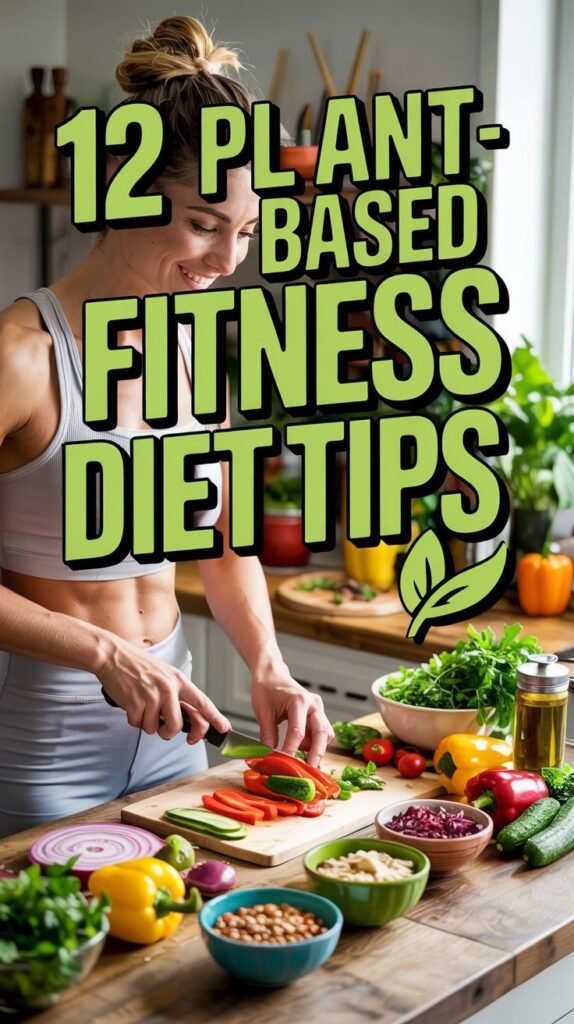
Beyond protein, a plant-based diet is rich in fiber, antioxidants, and micronutrients that support digestion, reduce inflammation, and enhance overall health — all crucial for anyone serious about fitness.
In this guide, we’ll explore 12 actionable vegan fitness diet tips that will help you:
✅ Maximize protein intake from plant sources
✅ Optimize meal timing for energy and muscle recovery
✅ Choose fat-burning, nutrient-dense foods
✅ Create balanced meals that support both strength and endurance
Whether you’re a seasoned athlete, a weekend warrior, or someone just starting a plant-based lifestyle, these tips are designed to make your diet easy, practical, and effective — helping you gain muscle, shed fat, and feel energized every day.
By the end, you’ll have a clear roadmap to fuel your workouts naturally while embracing the full benefits of a plant-based lifestyle.
1. Prioritize Complete Proteins
When it comes to building muscle, losing fat, or achieving a toned physique, protein is the foundation of every meal plan. Not all proteins are created equal, however.
Complete proteins contain all nine essential amino acids that your body cannot produce on its own.
These amino acids are crucial for muscle repair, recovery, and growth, making them a non-negotiable part of a fitness-focused diet.

Why Complete Proteins Matter
Amino acids are the building blocks of muscle tissue. When you work out, especially during strength training or resistance exercises, your muscle fibers experience micro-tears.
Complete proteins supply your body with the essential amino acids it needs to repair these tears, leading to stronger and larger muscles.
Additionally, complete proteins can help:
- Boost metabolism: Protein-rich meals require more energy to digest, slightly increasing calorie burn.
- Keep you full longer: High-quality protein promotes satiety, reducing the temptation to snack on unhealthy foods.
- Support overall health: Amino acids are involved in hormone production, immune function, and tissue repair.
Best Sources of Complete Proteins
- Animal-Based Proteins:
- Chicken breast, lean beef, turkey
- Eggs and egg whites
- Fish like salmon, tuna, and cod
- Dairy products such as Greek yogurt, cottage cheese, and milk
- Plant-Based Complete Proteins:
- Quinoa
- Soy products like tofu, tempeh, and edamame
- Buckwheat
- Chia seeds (when combined with other plant proteins)
How to Incorporate Them
- Meal Timing: Include a source of complete protein in every meal to support muscle protein synthesis throughout the day.
- Post-Workout: A protein-rich meal or shake within 30–60 minutes after exercise maximizes muscle recovery.
- Combination: If following a plant-based diet, combine complementary proteins (like rice + beans) to create a complete amino acid profile.
Bottom Line
Prioritizing complete proteins ensures your body gets the nutrients necessary for muscle repair, growth, and overall health.
Whether you’re aiming to gain muscle, burn fat, or maintain a lean physique, complete proteins are the most effective way to fuel your body, support recovery, and optimize workout results.
2. Use Vegan Protein Powders
For those following a plant-based diet or simply looking for a clean, convenient protein source, vegan protein powders are an excellent option.
These powders are typically derived from peas, rice, hemp, soy, or a blend of plant-based proteins, providing a rich amino acid profile that supports muscle growth, recovery, and overall health.

Why Vegan Protein Powders Are Effective
Even though animal proteins are naturally complete, many vegan protein powders are formulated to provide all essential amino acids, making them comparable in muscle-building potential. They offer several benefits:
- Muscle Recovery and Growth: Plant-based protein powders help repair and rebuild muscle fibers after exercise, supporting lean muscle development.
- Digestive Health: Many vegan powders are easier to digest than whey or casein, reducing bloating and discomfort.
- Reduced Allergens: Free from dairy, lactose, and often gluten, vegan protein powders are suitable for people with dietary sensitivities.
- Versatility: They can be incorporated into smoothies, oatmeal, baked goods, or shakes, making it easy to hit daily protein targets.
Popular Vegan Protein Powder Sources
- Pea Protein: High in branched-chain amino acids (BCAAs), which are essential for muscle repair.
- Rice Protein: Easily digestible and hypoallergenic, often combined with pea protein to create a complete amino acid profile.
- Hemp Protein: Rich in omega-3 fatty acids and fiber, supporting heart health alongside muscle recovery.
- Soy Protein: A complete plant-based protein that provides all essential amino acids, ideal for muscle-building.
- Blended Proteins: Many powders combine multiple plant proteins to ensure a balanced amino acid profile, mimicking the effectiveness of animal proteins.
How to Incorporate Vegan Protein Powders
- Post-Workout Shake: Mix with water, almond milk, or your favorite plant-based milk for a quick muscle recovery boost.
- Smoothies: Blend with fruits, vegetables, and healthy fats like nut butter for a nutrient-dense meal replacement.
- Baking and Cooking: Add protein powder to pancakes, muffins, or oatmeal to increase protein content without altering taste significantly.
- Daily Protein Goals: Use vegan protein powders to fill gaps if your plant-based diet isn’t providing enough protein for muscle growth.
Bottom Line
Vegan protein powders are a convenient, digestible, and effective way to meet your daily protein needs, especially for those building muscle on a plant-based diet.
By providing essential amino acids and supporting muscle repair, recovery, and growth, these powders help ensure your workouts translate into real, sustainable results.
3. Eat a Variety of Plant Foods
When it comes to building muscle and staying lean, many people focus on protein alone. But if you’re serious about achieving results—especially on a plant-based or balanced diet—you need to eat a wide variety of plant foods.
This approach ensures you’re not only meeting your protein needs but also fueling your body with the fiber, vitamins, minerals, antioxidants, and phytonutrients that support overall performance, recovery, and health.

Why Variety Matters
Unlike animal proteins, not all plant foods are complete proteins (meaning they don’t contain all nine essential amino acids).
However, when you combine different plant-based foods throughout the day, your body receives the full amino acid spectrum it needs for muscle growth and repair.
Beyond protein, diverse plant foods supply:
- Complex carbs for sustained energy during workouts.
- Healthy fats for hormone balance, which is vital for muscle development.
- Micronutrients like iron, magnesium, and zinc, which play a direct role in strength and recovery.
- Antioxidants that reduce inflammation and muscle soreness after exercise.
Best Plant Food Groups for Muscle Gain
- Legumes (beans, lentils, chickpeas) – Excellent for protein, fiber, and slow-digesting carbs.
- Whole Grains (quinoa, brown rice, oats, barley) – Provide energy and, when combined with legumes, create complete proteins.
- Nuts and Seeds (almonds, chia, hemp, sunflower seeds) – Rich in protein, healthy fats, and minerals like zinc and magnesium.
- Leafy Greens (spinach, kale, Swiss chard) – Supply iron, calcium, and antioxidants that support oxygen delivery and bone health.
- Starchy Vegetables (sweet potatoes, squash, beets) – Provide slow-burning carbs to fuel workouts and aid recovery.
- Fruits (bananas, berries, apples, citrus) – Quick energy plus antioxidants to fight inflammation and support immune health.
How to Incorporate Variety
- Mix and Match: Combine rice with beans, hummus with whole grain pita, or lentils with quinoa to maximize amino acid intake.
- Rotate Weekly Foods: Instead of eating the same meals every day, add different legumes, grains, or veggies to keep your diet nutrient-dense.
- Colorful Plates: Aim for multiple colors on your plate—greens, reds, oranges, and purples. Each color represents unique antioxidants and micronutrients.
- Snack Smart: Choose mixed nuts, roasted chickpeas, or fruit with almond butter instead of highly processed snacks.
Bottom Line
Eating a variety of plant foods is one of the best strategies for building lean muscle while keeping your diet balanced and enjoyable.
By combining legumes, grains, nuts, seeds, fruits, and vegetables, you ensure your body gets the protein, energy, and micronutrients it needs to grow stronger, recover faster, and perform better in and out of the gym.
4. Don’t Fear Carbs
arbohydrates often get a bad reputation in the fitness world, especially with so many “low-carb” and “no-carb” diet trends promising fast fat loss.
But if your goal is to build muscle, get six-pack abs, and perform at your best in the gym, you should not be afraid of carbs.
In fact, they’re one of the most important macronutrients for fueling your body and supporting long-term results.

Why Carbs Are Crucial for Muscle Building
Carbohydrates are your body’s primary energy source. When you eat carbs, they break down into glucose, which fuels your muscles during workouts.
Extra glucose is stored as glycogen in your muscles and liver, and this glycogen acts as your body’s “energy reserve.”
Without enough carbs, you may feel sluggish, struggle to lift heavy weights, or recover slower after workouts.
Key benefits of carbs for muscle growth include:
- Workout Performance: Carbs provide the quick, explosive energy needed for strength training, HIIT, and heavy lifting.
- Muscle Recovery: After a tough session, glycogen stores need to be replenished, and carbs help speed up recovery.
- Protein-Sparing Effect: When your body gets enough carbs, it doesn’t break down protein for energy. This means your dietary protein can do its main job—building muscle.
- Hormonal Support: Carbs help regulate insulin, which is essential for delivering nutrients like amino acids into your muscles.
Best Carbs for Muscle Gain
Not all carbs are equal. Instead of loading up on processed, sugary foods, focus on complex carbs that release energy slowly and support steady blood sugar levels:
- Whole grains: Brown rice, oats, quinoa, barley
- Starchy vegetables: Sweet potatoes, pumpkin, butternut squash
- Legumes: Lentils, beans, chickpeas
- Fruits: Bananas, berries, apples, oranges
- Vegetables: Broccoli, spinach, carrots, zucchini
These foods not only fuel workouts but also deliver fiber, vitamins, and minerals essential for overall health.
How Much Carbs Do You Need?
The right amount depends on your activity level, body type, and fitness goals. As a general guide:
- Muscle gain: 45–55% of total daily calories from carbs.
- Fat loss while maintaining muscle: 35–45% of total daily calories from carbs.
For example, a 180-pound male trying to build muscle may need anywhere from 250–350 grams of carbs per day, depending on how much he trains.
When to Eat Carbs
- Pre-Workout: Eat a carb-rich meal 1–2 hours before training for energy and stamina.
- Post-Workout: Replenish glycogen with fast-digesting carbs (like a banana or white rice) paired with protein to jumpstart recovery.
- Throughout the Day: Spread carbs evenly to maintain steady energy levels.
Bottom Line
Carbs are not your enemy—they’re your ally.
By choosing the right types and timing them smartly, you’ll have the fuel to train harder, recover faster, and maximize muscle growth.
If you want a lean, muscular body and visible abs, don’t cut carbs—use them strategically to your advantage.
5. Get Enough Healthy Fats
For years, fat was unfairly blamed as the main reason behind weight gain and poor health.
But the truth is, healthy fats are absolutely essential—not only for your overall well-being but also for building muscle, supporting recovery, and even helping you get that lean, defined six-pack.
When used correctly, fats are a powerful tool in your nutrition strategy.

Why Healthy Fats Matter for Muscle Growth
- Hormone Production: Healthy fats play a vital role in producing hormones like testosterone and growth hormone, which are critical for muscle repair and growth. Without enough fat, your hormone levels can drop, slowing progress in the gym.
- Energy Source: While carbs are your body’s primary source of quick energy, fats provide a long-lasting fuel supply—especially important for endurance training or longer workouts.
- Nutrient Absorption: Vitamins A, D, E, and K are fat-soluble, meaning your body can only absorb them when dietary fat is present. These vitamins support bone strength, recovery, and overall athletic performance.
- Joint and Brain Health: Omega-3 fatty acids help reduce inflammation, protecting your joints from heavy lifting stress, while also improving focus and mental clarity.
Best Sources of Healthy Fats
Not all fats are created equal. Focus on unsaturated fats and omega-3 fatty acids while limiting trans fats and excess processed oils. Some of the best sources include:
- Fatty Fish: Salmon, mackerel, sardines – rich in omega-3s for muscle recovery.
- Nuts & Seeds: Almonds, walnuts, chia seeds, flaxseeds, pumpkin seeds – excellent for a protein and fat combo.
- Avocados: Packed with heart-healthy monounsaturated fats and fiber.
- Olive Oil: A staple in the Mediterranean diet, supports heart health and reduces inflammation.
- Nut Butters: Peanut butter, almond butter, or cashew butter (choose natural, no added sugar or hydrogenated oils).
- Coconut Oil (in moderation): Provides medium-chain triglycerides (MCTs) for a quick energy boost.
How Much Fat Do You Need?
Fat should make up about 20–30% of your total daily calories. For example:
- If you eat 2,500 calories a day, around 55–80 grams of fat is ideal.
- Aim for a balance of omega-3s, omega-6s, and monounsaturated fats for optimal results.
Timing Healthy Fats
- Morning or Evening Meals: Great for steady energy and satiety.
- Avoid Pre-Workout: High-fat meals take longer to digest and may make you feel sluggish if eaten right before training.
- Pair with Veggies: Adding olive oil, avocado, or nuts to vegetables enhances vitamin absorption.
Bottom Line
Getting enough healthy fats isn’t just about energy—it’s about optimizing hormones, recovery, and performance.
If you want to build lean muscle, stay strong in the gym, and achieve long-term fat loss, don’t cut out fats—embrace them wisely.
Think of healthy fats as the fuel that keeps your body balanced, powerful, and moving toward your six-pack goals.
6. Monitor Iron Intake
When people think about muscle growth, they usually focus on protein, carbs, and fats. But one nutrient that often gets overlooked is iron—and it’s far more important than many realize.
Iron plays a key role in keeping your energy levels high, your workouts strong, and your recovery smooth. Without enough iron, even the best diet and training plan can feel like it’s failing you.

Why Iron Matters for Muscle Growth and Fitness
Iron is a vital mineral because it helps your body transport oxygen through hemoglobin in red blood cells. This oxygen delivery is what powers your muscles during exercise.
If your iron levels are low, your muscles won’t get enough oxygen, leading to fatigue, slower recovery, and weaker performance.
Key benefits of proper iron intake include:
- Improved Endurance: Adequate iron ensures muscles have the oxygen they need to sustain longer workouts.
- Stronger Performance: More oxygen to your muscles = better strength, stamina, and focus.
- Faster Recovery: Iron supports energy production, helping your body repair and rebuild after tough sessions.
- Prevention of Fatigue: Low iron (especially common in women and plant-based eaters) can cause tiredness, dizziness, and reduced motivation.
Best Iron-Rich Foods
There are two types of dietary iron: heme iron (from animal sources, more easily absorbed) and non-heme iron (from plant sources, less easily absorbed but still valuable).
- Heme Iron Sources:
- Lean red meat (beef, lamb)
- Chicken and turkey
- Fish (salmon, tuna, sardines)
- Eggs
- Non-Heme Iron Sources (Plant-Based):
- Lentils, chickpeas, black beans
- Spinach, kale, and Swiss chard
- Quinoa and fortified cereals
- Pumpkin seeds, sesame seeds, tofu
Boosting Iron Absorption
- Pair with Vitamin C: Eating iron-rich foods alongside vitamin C (like citrus fruits, bell peppers, or tomatoes) boosts absorption.
- Limit Inhibitors Around Iron Meals: Tea, coffee, and high-calcium foods can block iron absorption. Avoid consuming them right with your iron-heavy meals.
- Balance Animal and Plant Sources: If you’re not fully vegan, mixing both heme and non-heme iron sources can maximize intake.
How Much Iron Do You Need?
- Men: About 8 mg per day
- Women: About 18 mg per day (due to menstrual blood loss)
- Athletes: Often need slightly higher amounts to keep up with intense training demands.
Bottom Line
Monitoring iron intake is just as important as tracking protein or carbs if you want to perform and recover at your best.
A well-balanced diet with a mix of iron-rich foods ensures your muscles get the oxygen they need to grow stronger, recover faster, and power through every workout.
Neglecting iron could hold you back from achieving your six-pack or muscle-building goals—so make sure it’s on your radar.
7. Load Up on Legumes
Legumes are one of the most powerful plant-based staples you can add to a vegan or vegetarian fitness diet.
They are not only rich in protein but also supply complex carbs, fiber, and key micronutrients that fuel workouts, support recovery, and help maintain steady energy throughout the day.
If you’re aiming to build muscle, burn fat, or simply improve endurance, making legumes a daily habit will transform your results.
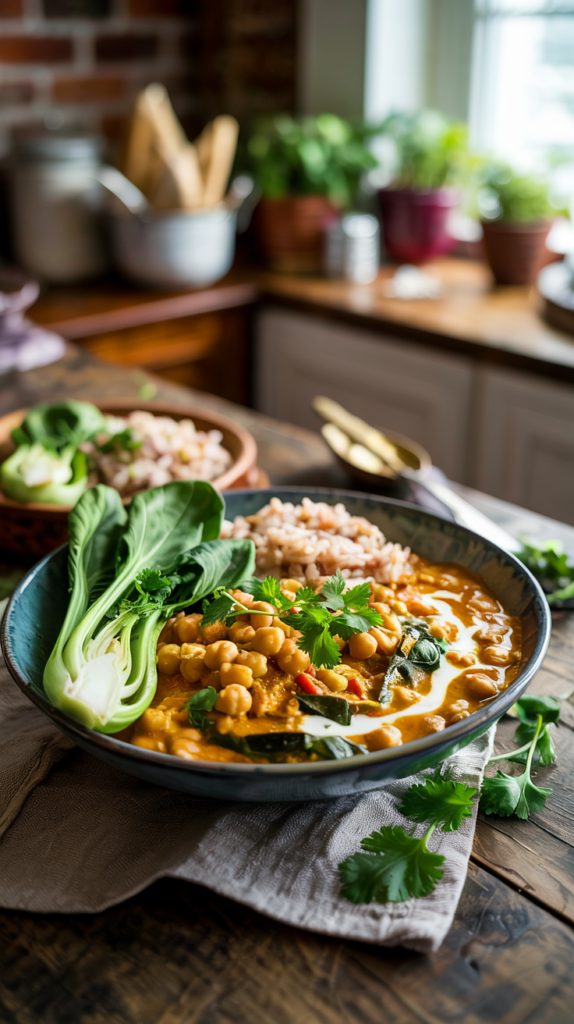
Why Legumes Matter for Fitness
- High in Protein: Lentils, chickpeas, black beans, and kidney beans provide around 12–18 grams of protein per cooked cup, making them a strong plant-based protein source.
- Muscle Recovery: Their amino acid profile helps repair and build muscle when paired with whole grains (like rice or quinoa).
- Steady Energy: The slow-digesting carbs prevent crashes and give sustained fuel for long workouts.
- Gut Health: The fiber supports digestion, regulates appetite, and feeds healthy gut bacteria.
- Mineral Rich: Many legumes are packed with iron, magnesium, potassium, and zinc — essential for strength, oxygen transport, and recovery.
Best Legumes for a Vegan Fitness Diet
- Lentils: Cook quickly, high in protein, great for soups and stews.
- Chickpeas: Perfect for salads, hummus, or roasted snacks.
- Black Beans: Excellent in burrito bowls, wraps, or chili.
- Kidney Beans: Dense and filling, great in curries and stews.
- Edamame & Soybeans: One of the few plant-based complete proteins.
How & When to Eat Them
- Pre-Workout: Pair chickpeas or lentils with rice for lasting energy.
- Post-Workout: Combine beans with quinoa or corn tortillas to aid muscle repair.
- Snack: Roasted chickpeas or hummus with veggies make a protein-packed snack.
- Dinner: Bean-based stews or lentil curries give you slow-digesting fuel overnight for recovery.
Tip for Maximum Absorption:
Pair legumes with Vitamin C-rich foods (like bell peppers, tomatoes, or citrus) to improve iron absorption.
Avoid Bloating:
If legumes make you gassy, start with small amounts and soak/cook them well. Canned beans can be rinsed to remove excess compounds that cause discomfort.
In short, legumes are a fitness superfood for anyone on a vegan or plant-based diet. They give you the protein for muscle growth, the carbs for energy, and the fiber for fat loss — all in one affordable and versatile package.
8. Supplement Smartl
Even with a carefully planned plant-based or vegan fitness diet, there are a few nutrients that can be hard to get in sufficient amounts from food alone.
That’s where supplements come in — not as a replacement for whole foods, but as a support system to fill the nutritional gaps and ensure your body performs at its peak.

Why Supplements Are Important in a Vegan Fitness Diet
When you’re training hard, your body demands more fuel, recovery support, and micronutrients than the average person.
While legumes, grains, nuts, and veggies cover most of your bases, certain vitamins and minerals — especially those typically found in animal products — may fall short.
Ignoring them can lead to fatigue, slower muscle recovery, or even long-term health issues.
Key Supplements to Consider
- Vitamin B12
- Essential for energy production and nervous system health.
- Found almost exclusively in animal foods, so supplementation is non-negotiable for vegans.
- Take it as a sublingual tablet or in a multivitamin.
- Vitamin D
- Supports bone strength, immune function, and mood.
- Sunlight is the best source, but if you live in a cloudy climate or train indoors, supplementing (especially in winter) is wise.
- Omega-3 Fatty Acids (ALA, EPA, DHA)
- Critical for reducing inflammation, aiding recovery, and protecting heart health.
- Flaxseeds, chia, and walnuts give ALA, but your body doesn’t convert it efficiently.
- Algae oil supplements directly provide EPA and DHA (the forms your body needs most).
- Creatine (Vegan-Friendly)
- Enhances strength, power, and muscle-building potential.
- Naturally found in meat, so vegans benefit greatly from supplementation.
- Look for micronized creatine monohydrate.
- Iron (if deficient)
- Needed for oxygen transport and stamina.
- Plant sources are non-heme iron, which absorbs less efficiently.
- Only supplement if a blood test shows low levels, and always pair with Vitamin C for better absorption.
- Zinc & Iodine
- Zinc supports immunity, testosterone levels, and recovery.
- Iodine supports thyroid function and metabolism.
- Can be harder to get consistently on a vegan diet unless you eat seaweed regularly.
- Protein Powder (Optional)
- Pea, brown rice, or hemp protein powders can help you reach daily protein goals.
- Useful for quick post-workout shakes if you’re short on time.
Best Time to Take Supplements
- Morning: B12, Vitamin D, Multivitamin.
- With Meals: Omega-3, Iron (if prescribed), Zinc.
- Post-Workout: Creatine + Protein powder for strength and recovery.
Pro Tip: Don’t overload on supplements. Start with the essentials (B12, D, Omega-3) and add others based on your body’s needs and blood test results.
Smart supplementation ensures that your plant-based diet works with your training goals — giving you steady energy, faster recovery, and stronger results without nutritional setbacks.
9. Stay Hydrated
Hydration is often overlooked in fitness, yet it plays a critical role in fat burning, muscle growth, endurance, and recovery.
For anyone following a plant-based or vegan fitness diet, proper hydration becomes even more important because plant foods are naturally rich in fiber, which increases your body’s water needs.
If you want six-pack abs or peak performance in your workouts, you need to treat water like your second fuel source — right after food.

Why Hydration Matters for Fitness & Abs
- Supports Fat Loss – Drinking enough water boosts metabolism and helps your body burn more calories at rest. It also prevents overeating since thirst is often mistaken for hunger.
- Enhances Muscle Definition – Muscles are made up of about 75% water. Staying hydrated keeps them fuller, tighter, and more defined — making those six-pack abs pop.
- Boosts Workout Performance – Even mild dehydration can cause fatigue, slower reaction times, and decreased endurance during training.
- Aids Digestion – A plant-based diet is high in fiber, which is excellent for gut health but requires more water to avoid bloating or constipation.
- Speeds Recovery – Water helps transport nutrients to muscles and flush out toxins from exercise.
How Much Water Do You Need Daily?
- General Rule: Aim for at least 3–4 liters (12–16 cups) per day for active individuals.
- Workout Days: Add an extra 500–1000 ml (16–32 oz) for every hour of exercise, especially if you sweat heavily.
- Listen to Your Body: Thirst, darker urine, and low energy are all signals that you need more fluids.
Best Times to Drink Water
- Morning: Drink a big glass of water right after waking up to kickstart hydration.
- Pre-Workout: 500 ml (16 oz) about 30–60 minutes before training.
- During Workout: Sip 100–200 ml (3–6 oz) every 15–20 minutes.
- Post-Workout: Rehydrate with at least 500 ml (16 oz) plus electrolytes if you’ve sweated a lot.
- With Meals: Helps digestion but avoid drinking excessive amounts immediately after eating to prevent bloating.
Pro Hydration Tips
- Infuse Water with Flavor – Add lemon, cucumber, or mint for taste and extra electrolytes.
- Coconut Water – A natural plant-based electrolyte drink for post-workout hydration.
- Herbal Teas – Caffeine-free teas count toward hydration while adding antioxidants.
- Electrolyte Powders – If training intensely, use vegan-friendly electrolyte supplements with sodium, potassium, and magnesium.
Pro Tip: Clear, light-yellow urine is a good sign you’re hydrated enough. Dark yellow = drink more water.
Staying hydrated isn’t just about quenching thirst — it’s about fueling your workouts, revealing muscle definition, and keeping your body in fat-burning mode.
Combine hydration with your vegan diet, and you’ll notice a massive difference in energy, recovery, and how your abs look.
10. Eat Frequently
When it comes to building muscle, burning fat, and achieving lean six-pack abs, meal timing and frequency play a key role.
While some people thrive on intermittent fasting, eating more frequently throughout the day can provide steady energy, prevent muscle breakdown, and keep your metabolism firing.
For many fitness enthusiasts—especially those on a plant-based or vegan diet—eating small, balanced meals every 2–3 hours helps optimize performance and recovery.

Why Eating Frequently Works for Abs & Muscle Gain
- Boosts Metabolism – Every time you eat, your body expends energy digesting and absorbing nutrients (the thermic effect of food). Eating smaller, regular meals keeps your metabolism more active throughout the day.
- Prevents Muscle Breakdown – If you go too long without eating, your body may tap into muscle protein for energy. Frequent meals provide a steady stream of amino acids to protect lean muscle mass.
- Balances Energy Levels – Smaller, consistent meals help avoid energy crashes, keeping you strong during workouts and focused throughout the day.
- Controls Hunger & Cravings – Eating every few hours prevents overeating by stabilizing blood sugar, which reduces cravings for junk food and sugar.
- Improves Nutrient Absorption – Spacing meals makes it easier for your body to digest and utilize proteins, carbs, and fats efficiently instead of overwhelming your system with huge meals.
How Often Should You Eat?
- Every 2–3 Hours: Aim for 4–6 mini-meals or snacks per day.
- Protein in Every Meal: Include at least 20–30 grams of protein per meal to maximize muscle repair and growth.
- Post-Workout Priority: Have a protein-rich meal or shake within 30–60 minutes after training for recovery.
Sample Eating Schedule for Abs & Muscle Gain
- 7:00 AM – Breakfast: Oatmeal with almond butter, chia seeds, and a vegan protein shake.
- 10:00 AM – Snack: Apple with a handful of almonds or roasted chickpeas.
- 1:00 PM – Lunch: Quinoa salad with lentils, avocado, spinach, and olive oil.
- 4:00 PM – Pre-Workout Meal: Sweet potato with tofu and steamed broccoli.
- 6:00 PM – Post-Workout Shake: Plant-based protein shake with banana and almond milk.
- 8:00 PM – Dinner: Stir-fried vegetables with tempeh and brown rice.
- 10:00 PM – Late Snack (Optional): Cottage-style soy yogurt with pumpkin seeds.
Pro Tips for Eating Frequently
- Meal Prep Is Key – Prepare meals and snacks in advance so you don’t skip or rely on fast food.
- Focus on Quality – Eating often doesn’t mean eating junk. Stick to clean, whole foods rich in protein, fiber, and healthy fats.
- Stay Hydrated – More meals mean more digestion, so drink enough water to keep your system running smoothly.
- Adjust Calories – Eating frequently won’t automatically cause weight gain if portions are controlled. Match total calories to your fitness goal (surplus for muscle gain, deficit for fat loss).
Eating frequently fuels your muscles, supports fat loss, and makes it easier to stay disciplined on your diet. If your goal is six-pack abs, combining frequent clean meals with smart training and hydration will get you there faster.
11. Plan Your Meals Ahead
If your goal is to build lean muscle and carve out six-pack abs, meal planning is one of the most powerful habits you can adopt.
Without a structured eating routine, it’s easy to miss protein goals, rely on processed food, or overeat—slowing down both muscle growth and fat loss.
Planning meals ahead keeps you disciplined, ensures you hit your nutrient targets, and makes your fitness journey far more sustainable.

Why Meal Planning Matters for Abs
- Consistency Builds Results – Abs aren’t built overnight. Consistently eating the right foods in the right amounts ensures steady progress.
- Avoids Last-Minute Bad Choices – When hunger strikes and you don’t have a plan, you’re more likely to grab junk food. Meal planning removes temptation.
- Balances Macros Effectively – Planning lets you hit the right ratios of protein, carbs, and fats for muscle gain and fat loss.
- Saves Time & Stress – Prepping meals in bulk saves time during busy weeks and helps you avoid decision fatigue.
- Keeps Calories in Check – You know exactly what you’re eating, preventing accidental overeating or undereating.
How to Plan Meals for Muscle Gain & Abs
- Set Your Daily Goals
- Protein: Aim for 1.2–2.0 g per kg of body weight.
- Carbs: Choose complex carbs like brown rice, oats, and quinoa for steady energy.
- Fats: Include healthy sources like avocado, nuts, and olive oil.
- Prep in Batches
- Cook protein in bulk (chicken, tofu, tempeh, salmon).
- Pre-portion carbs like sweet potatoes, brown rice, and lentils.
- Chop vegetables in advance for quick stir-fries or salads.
- Use Storage Containers
Invest in BPA-free containers or glass jars so meals stay fresh and easy to grab. - Plan for Snacks
Healthy snacks like almonds, boiled eggs, hummus with veggies, or protein shakes should be prepped too—not just main meals. - Rotate Recipes
Keep variety in your diet so you don’t get bored. Switch between lean proteins, whole grains, and colorful veggies.
Sample Day of Pre-Planned Meals
- Breakfast: Overnight oats with almond milk, chia seeds, and a scoop of protein powder.
- Snack: Greek yogurt with blueberries and walnuts.
- Lunch: Grilled chicken with quinoa and roasted vegetables.
- Snack: Protein shake with banana.
- Dinner: Salmon with sweet potatoes and asparagus.
- Snack (Optional): Cottage cheese with flaxseeds.
Pro Tips
- Dedicate 1–2 days a week to meal prep Sundays (or any day).
- Keep a grocery list to avoid buying unnecessary junk food.
- Track meals with an app or journal to ensure progress.
- Always carry at least one healthy snack in your bag for emergencies.
The truth is, abs are revealed in the kitchen just as much as in the gym. By planning meals ahead, you’re not leaving your progress up to chance—you’re setting yourself up for success every single day.
12. Track Your Macr
If you’re serious about building muscle and revealing six-pack abs, tracking your macros (macronutrients) is one of the most effective strategies.
Unlike random calorie counting, macro tracking ensures you’re fueling your body with the right balance of protein, carbohydrates, and fats.
This not only helps you build lean muscle but also ensures that fat loss happens without sacrificing strength or energy.
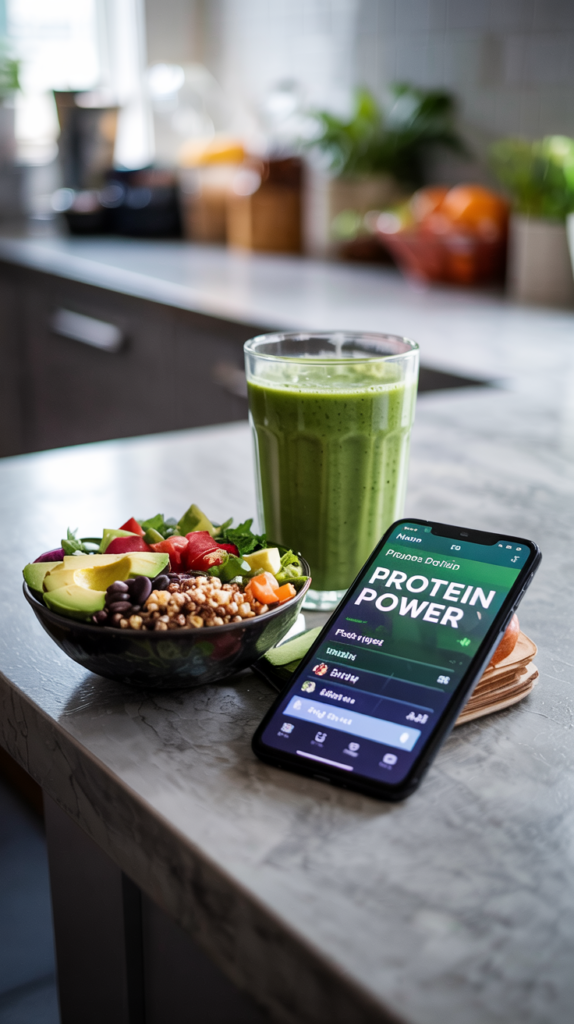
What Are Macros?
Macros are the three main nutrients your body uses for energy and recovery:
- Protein – Essential for muscle repair and growth.
- Carbohydrates – The body’s primary energy source, crucial for powering workouts.
- Fats – Supports hormone production, brain function, and fat metabolism.
Why Tracking Macros Helps Build Abs
- Precision for Results – Tracking ensures you’re not just eating “healthy,” but eating in the right amounts for your specific goals.
- Supports Muscle Growth – Without enough protein, you’ll struggle to build or maintain lean muscle mass.
- Optimizes Fat Loss – Balancing carbs and fats prevents energy crashes and keeps fat loss consistent.
- Prevents Overeating/Undereating – Even clean foods can lead to weight gain if portions aren’t controlled.
- Customizable for Your Body – Macro ratios can be adjusted based on whether you need to cut fat, maintain, or bulk up.
General Macro Ratios for Six-Pack Abs
- Muscle Gain (Lean Bulk): 40% carbs, 30% protein, 30% fats
- Fat Loss (Cutting): 40% protein, 30% carbs, 30% fats
- Maintenance: 40% carbs, 30% protein, 30% fats
(These ratios vary depending on body type, activity level, and metabolism.)
How to Track Macros Easily
- Find Your Caloric Needs – Use a TDEE (Total Daily Energy Expenditure) calculator to know how many calories you burn daily.
- Set Macro Targets – Distribute your daily calories into proteins, carbs, and fats.
- Protein: ~1.6–2.2g per kg of body weight
- Carbs: Adjust depending on training intensity
- Fats: Around 20–30% of total calories
- Use Tracking Apps – MyFitnessPal, Cronometer, or Carb Manager make logging meals effortless.
- Weigh & Measure Food – A food scale ensures accuracy in portion sizes.
- Plan Ahead – Pre-log meals in your tracker so you hit your numbers consistently.
Sample Day of Macro Tracking (Cutting for Abs)
- Breakfast: 4 egg whites + 1 whole egg + oats with berries (40g protein, 40g carbs, 10g fats)
- Snack: Protein shake with almond milk (25g protein, 5g carbs, 2g fats)
- Lunch: Grilled chicken breast, quinoa, and broccoli (45g protein, 45g carbs, 12g fats)
- Snack: Cottage cheese with almonds (20g protein, 10g carbs, 15g fats)
- Dinner: Salmon with sweet potato and spinach (40g protein, 30g carbs, 18g fats)
Pro Tips for Tracking Macros
- Be patient—hitting your macros consistently for weeks yields visible results.
- Don’t obsess over perfection; aim to stay within +/- 5g of each macro daily.
- Adjust weekly based on progress (measure waist, track weight, check mirror progress).
- Always pair tracking with strength training for maximum muscle retention.
Tracking macros is like having a blueprint for your six-pack journey. Without it, you’re guessing. With it, you’re in control—building muscle while stripping away fat in a calculated way.
Frequently Asked Questions (FAQs)
1. Do I need to eat 6 meals a day to get abs?
Not necessarily. The key is hitting your calorie and macro goals consistently, whether you eat 3 big meals or 6 smaller ones. However, eating more frequently may help control hunger and provide steady energy.
2. Can I get six-pack abs without tracking macros?
Yes, but it’s much harder. Tracking macros gives you precision and ensures you’re eating the right balance of protein, carbs, and fats. Without it, you may accidentally overeat or undereat, slowing your progress.
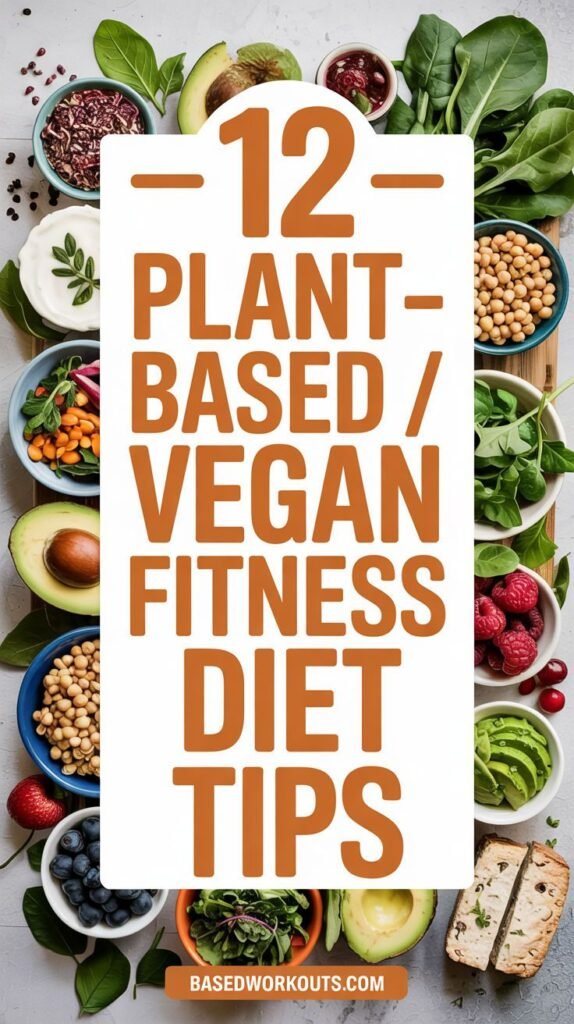
3. How much protein do I need daily for abs?
Aim for 1.6–2.2 grams of protein per kilogram of body weight. This amount supports lean muscle growth and prevents muscle loss while cutting body fat.
4. Do carbs make me lose my abs?
No. Carbs are not the enemy—they’re the body’s main fuel source. The key is choosing complex carbs like oats, quinoa, and brown rice, while limiting refined sugars and processed carbs.
5. Is cardio necessary for six-pack abs?
Cardio can help create a calorie deficit, which is essential for fat loss, but it’s not the only factor. Strength training and diet are more effective for maintaining muscle while losing belly fat.
6. How long does it take to see six-pack abs?
It depends on your current body fat percentage, consistency, and diet. On average, most people need 10–20 weeks of consistent diet and training to reveal visible abs, but results vary.
7. Can women also follow these diet tips for abs?
Yes. The principles of macro tracking, meal planning, and clean eating apply to both men and women. The only difference may be calorie and macro targets based on body size and activity level.
8. Do I need supplements to get abs?
Not required, but supplements like whey protein, creatine, and BCAAs can help fill nutritional gaps and support recovery. Whole foods should always come first.
9. Can I still have cheat meals?
Yes, in moderation. One cheat meal per week can help with cravings and sustainability. Just don’t let it spiral into cheat days that undo your weekly progress.
10. What’s more important: diet or exercise for abs?
Both matter, but diet is the bigger factor. You can train your abs daily, but if your diet is poor, belly fat will cover them. Nutrition + resistance training is the winning combo.
Getting six-pack abs isn’t about magic tricks, quick fixes, or starving yourself—it’s about discipline, strategy, and balance.
Abs are built in the gym but revealed in the kitchen, which means your diet choices are just as important as your workouts.
By focusing on complete proteins, complex carbs, and healthy fats, while planning meals ahead and tracking your macros, you create the perfect environment for fat loss and muscle definition.
The journey requires patience. For some, visible abs may come in a few months; for others, it could take longer depending on body fat levels and consistency. But the principles remain the same: eat clean, train smart, hydrate well, and stay consistent.
If you stick to the nutritional strategies outlined—whether it’s eating frequently, meal prepping, or following a specific diet style—you’ll not only get closer to defined abs but also build a lifestyle that supports long-term health and strength.
Remember, abs are not just about aesthetics; they’re about having a strong, functional core that powers your workouts and protects your body.
Bottom line: Consistency beats perfection. Stick to the plan, fuel your body with the right foods, and your six-pack will show up as a byproduct of your dedication.

